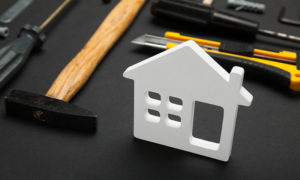Preventative maintenance exists in all aspects of ownership. Whether you own something as big as a building or as small as an air purifier, performing preventive maintenance is a key strategy in prolonging asset life.
What Is Preventative Maintenance?
In simple terms, preventative maintenance is when you clean and maintain various assets, equipment, and fixtures on a routine basis to avoid damages and breakdowns. It has the overall goals of preventing downtimes, extending asset lifespan, and protecting you from costly repairs. It differs from corrective maintenance, which is when you would perform repairs only after the problem has already transpired.
When people think about this form of maintenance, they often associate it with car preventative maintenance. This usually involves taking your car to a mechanic for inspections, oil changes, and other tune-ups. But, vehicle preventative maintenance is not all there is to it. Preventative maintenance exists in many forms, including house preventative maintenance and building preventative maintenance.
What Is Preventive Maintenance and Its Importance?
In your quest to understand preventative maintenance, you may come across a similar term, preventive maintenance. A lot of people use these two terms interchangeably, and that is because they mean the same thing. The fact of the matter is, there is no difference between preventative maintenance and preventive maintenance.
As such, preventive maintenance can also apply to various assets, equipment, and fixtures. This includes preventive maintenance for vehicles, preventive maintenance for residential properties, and preventive maintenance for commercial properties.
The importance of preventive maintenance (or preventative maintenance) was briefly touched upon in the previous section. Performing routine preventive maintenance can stave off deterioration and ensure all assets and equipment function as intended.
It is also a very savings-forward scheme since this type of maintenance work can prolong the useful life of an asset and prevent expensive repairs. When you catch problems early on, you can nip them in the bud and keep them from snowballing into an uncontrollable and costly mess. For example, it is much cheaper to clean your gutters than to repair water damage that can often result from clogged gutters.
Types of Preventive Maintenance
There are many different types of preventive maintenance, and this part will discuss each one briefly.
Condition-Based Monitoring
With condition-based monitoring, you observe the asset and look for signs of oncoming failure. Examples of this type of preventative maintenance include looking for cracks or damages, listening for strange noises, and observing any changes in temperature.
Meter-Based Maintenance
Meter-based maintenance (or performance-based maintenance) involves the use of a measuring device — a meter — to gauge whether an asset needs repairs. You can also use a certain parameter to determine maintenance. Preventive maintenance examples under this include changing engine oil every X miles driven and reading a meter to check pressure levels on a machine.
Failure-Finding Maintenance
As its name indicates, failure-finding maintenance looks for a warning sign, usually in the form of a protective device. This device might tell you when there is an issue with an asset or it can turn a machine off automatically when it detects a problem.
Risk-Based Maintenance
With risk-based maintenance, you incorporate analytics into maintenance work. To do this, you must evaluate which assets are at risk of breaking down and prioritize repairs based on the level of risk. It makes use of the Pareto principle or 80-20 rule, which tells you that 80 percent of failures are the result of 20 percent of causes.
Predictive Maintenance
Predictive maintenance is similar to condition-based monitoring in that it involves observing your equipment and assets. But, whereas the latter uses results to evaluate the condition of an asset, the former uses sensor devices. Once a sensor device recognizes imminent failure, it will create an automatic work order, which it will then assign to a technician. Because predictive maintenance is highly automated, it requires the use of software.
Prescriptive Maintenance
Prescriptive maintenance also involves the use of software, one that is even more sophisticated than what is necessary for predictive maintenance. This type of maintenance integrates advanced analytics and machine learning into the process. Prescriptive maintenance software is not yet widely available to companies. And, when it is, it usually comes with a hefty price tag.
Time-Based Maintenance
Also known as calendar-based maintenance, this type of preventative maintenance is commonly used by commercial facilities. It involves following an established schedule for performing various cleaning and maintenance work. Examples include changing air filters every three months and cleaning gutters twice a year.
How to Create Your Own Preventative Maintenance Plan
Every facility should have a preventive maintenance plan in place. This allows you to refer to a given schedule and list of tasks so that you don’t miss anything important. To construct your preventive maintenance checklist, make sure to do the following:
 Examine your property from a structural and functional standpoint to identify any and all assets, equipment, or fixtures that require regular cleaning and maintenance.
Examine your property from a structural and functional standpoint to identify any and all assets, equipment, or fixtures that require regular cleaning and maintenance.- List all identified points that require preventative maintenance, and then specify what tasks must be completed for each one. For example, to maintain HVAC systems, you will need to replace air filters, lubricate pumps, calibrate sensors, clean the condenser oil, etc.
- Determine how often each task must be performed. For tasks that don’t rely on a calendar-based system, indicate the trigger/s for preventative maintenance. For example, how many items must be produced by a manufacturing machine before it is due for maintenance?
- Compile all of your data in a single spreadsheet or file. If you use software, input and update all the necessary information.
- Make sure all related personnel understand and receive a copy of the schedule. They must also know the proper preventive maintenance procedure for each line item.
Should You Get Professional Preventative Maintenance Services?
Whether you operate a large facility or a small one, keeping up with preventive maintenance tasks can quickly become challenging. This is particularly true for those who don’t have experience or expertise in the subject matter or those who lack the time or personnel for the job. This is where preventive maintenance services come in.
Hiring a professional maintenance company has many benefits. For one thing, professionals have the right skills and knowledge to efficiently and effectively perform the tasks for you. They can perform a preventive maintenance inspection with ease because they know what to look for. Plus, they have access to the proper tools and connections.
Professionals are also better equipped to follow maintenance plans. They typically don’t run out of maintenance technicians to assign to a job, allowing them to adjust to whatever schedule you require.
Need Help?
Preventative maintenance is essential to the longevity and functionality of many different assets. But, due to a lack of time or skill, it is not always advisable to do preventive maintenance yourself.
Maintenance Specialists Inc. offers preventive maintenance services to commercial buildings and facilities. Call us today at 704.405.6000 or contact us online to request a free proposal.
RELATED ARTICLES:
- What Are The Different Types of Preventive Maintenance?
- Preventive Maintenance Schedules For Commercial Properties You Can Follow
- The Ideal Preventative Maintenance Checklist For Commercial Buildings

